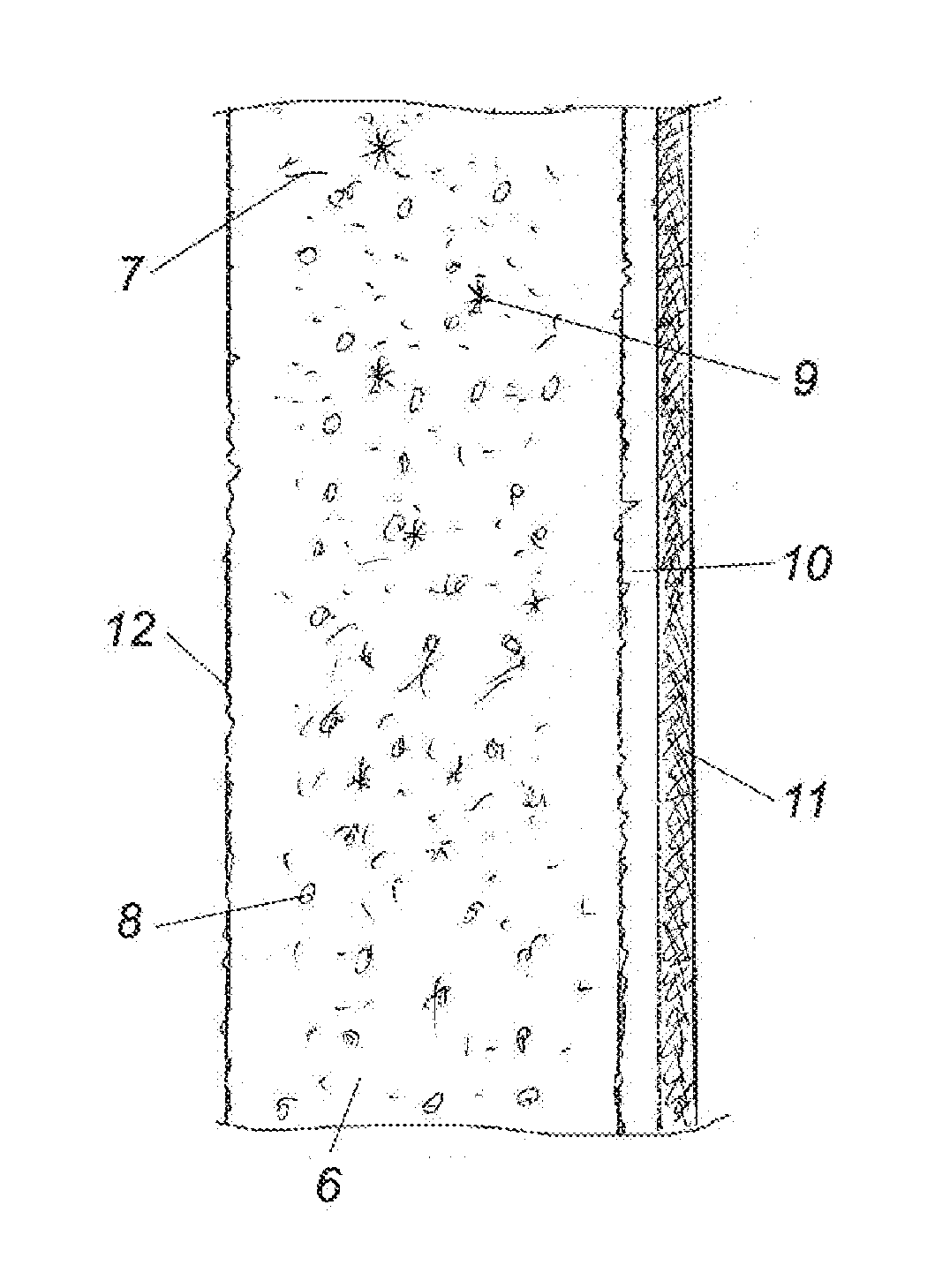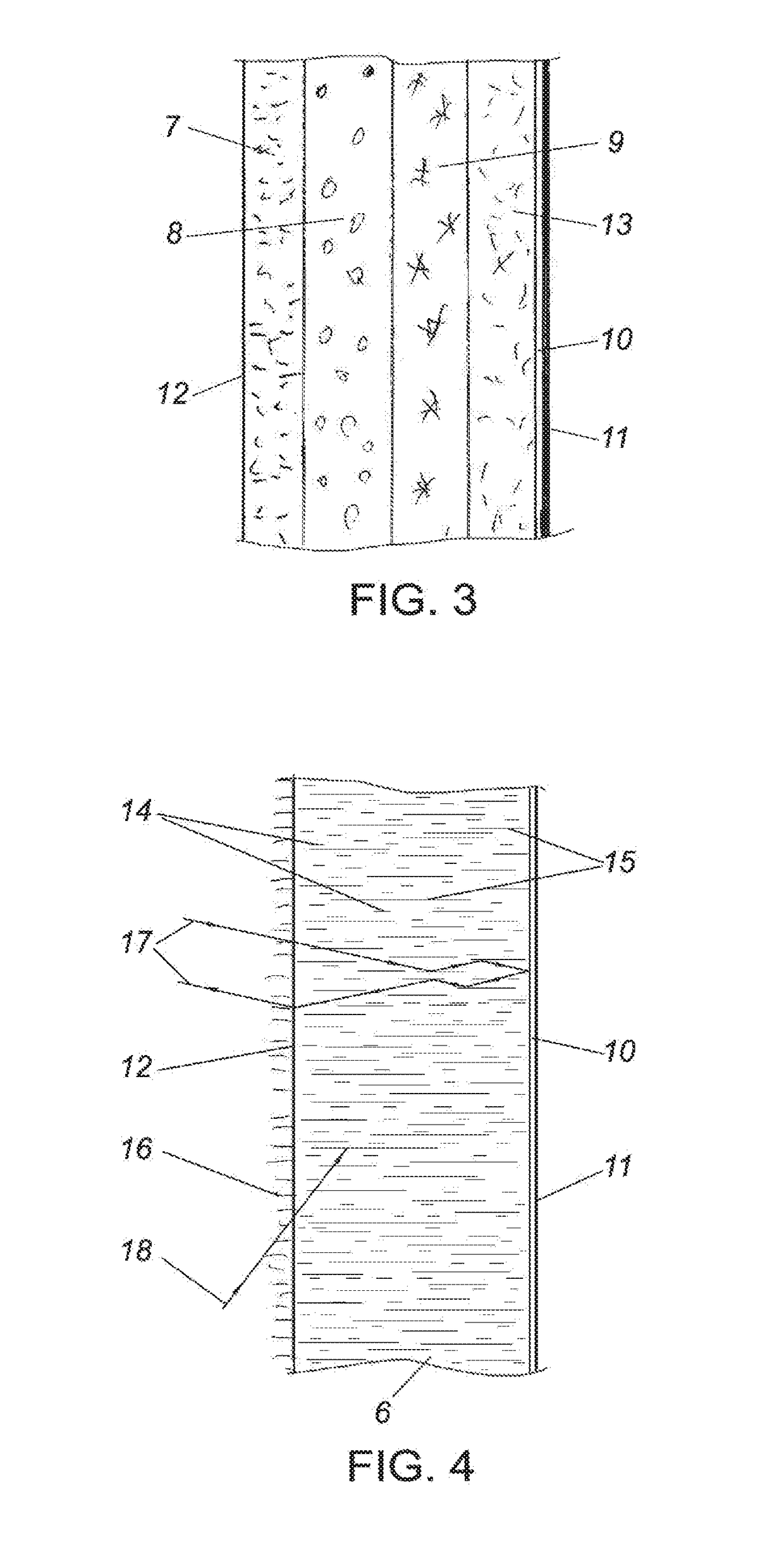The existing designs of retro-reflective and light-transmitting screens of rolled, suspended and rigid subtypes have a number of disadvantages significantly limiting the functionality of their application.
The main disadvantages of the existing screens and systems based thereon will include the following.
1. Ambient light by external light sources, which reduces the contrast of the perceived image which dramatically decreases the distinctiveness of gray scale shades and demands a significant increase in
light flux from its source.
Therefore, the existing screens require almost complete blackout of premises for the rendering of full photographic footage
latitude, which is not always desirable and sometimes even impossible, since it not only limits the additional functional needs of the audience accompanying the demonstration (for example, at lessons, lectures, seminars, conferences, roundtables, etc.), but is also fundamentally unacceptable in some cases for basic security reasons when working with young children and elderly persons with disabilities.
Pulse technogenic image frames illumination results not only in a loss of a part of the
light flux from the
projector, but also dramatically increases the load on eyesight, since there are no real sources of images of such a pulsed reflection nature of natural
daylight, especially at a significant pulse ratio, such as in the
light valve division of
stereo pair frames in a 3D projection, where even the duration of light pulses of individual image frames becomes less than the time intervals between these pulses.
These well-known disadvantages lead to an inadequate and uncomfortable viewing, to a dramatic increase in load and fatigue of visual organs and the whole
organoleptic perception of the audience, to the lack of efficiency of the projection systems in the conditions of moderate lighting in most practical cases of
multimedia applications in the actually existing demonstration premises of virtually universal purpose and
life support: at lessons in schools and at seminars and lectures at universities, at conferences, in
studio apartments, in cafes, bars and restaurants, at discos and ballrooms, in sport and fitness centers, in conference rooms with remote access to materials and interlocutors, in situational and dispatch control centers, in medical and judicial institutions, in imitating simulators and gaming systems, as well as in a vast variety of other similar
multimedia applications.
Aside from that, the existing projectors with even standardized HD quality formats do not allow perceiving the images in a wide angle of a natural view, to which the whole evolution of motion picture industry was coming gradually and deliberately pursuing its goal of the maximum involvement of a viewer in the events of demonstrated stories through the creation of virtual >.
However, the spectral specificity of the
afterglow of the phosphors specified in this invention makes it impossible to use this screen and its luminescent materials for adequate demonstration of the footage, and that's why such screens are intended only for devices creating original, background, and special lighting effects.
This technical solution does not account for the pixel structure of modern
digital image formats and pursues the only goal of reducing the
impact of ambient illumination, without dealing with the issues of optical interpolation both in its geometric and time schemes.
Among disadvantages of this known solution is its high structural and technological complexity and, accordingly, high price, as well as the regularity of the raster structure, an increment of which is fundamentally impossible to make much smaller compared to the pixel size on the screen, since the reduction of the size of optical cells in this case down to the commensuration with the wave length of incident light in air will cause a change of the laws of particle-
beam optics to a fundamentally different concept of wave
optics.
Moreover, the strategic
disadvantage of the approach used in the design disclosed in the patent RU 2324211 is the idea of the authors about the provision of
high resolution for
digital video systems by increasing the playback
clarity of artificially added technogenic features of digital images, such as
computer graphics and
animation, texts, charts and other video products of the computer display origin and handling, which have no direct relation to reality registered with the use of sampling by analogy with the “Procrustean
bed” method known since ancient times, rather than by recreating the informative details of the reproduced images as identification marks of the visual images of real objects in the dynamics of its movements.
However, these known devices were aimed only at increasing the
image contrast under external illumination conditions.
Fundamentally unrepairable defects of the specified structures are is their high technical and technological complexity inevitably resulting in the rise in the cost of products.
Moreover, the geometrical regularity (periodicity, determinacy) of the optical heterogeneity of the working surface of such video interfaces inevitably contributes to the manifestations of interference with another geometric periodicity—a pixel grid of the projector
light flux brightness, thereby resulting in the appearance of additional geometric patterns in the form of alternating lines, blotchiness and “feathers” with various
chrominance and brightness due to the effect of beating of two or more periodic processes.
The common
disadvantage of all these known devices is the absence of full consideration of perceptual psycho-physiological characteristics of the
perception subjects of typical visual images and individual identification marks, inherent in the images of real footage objects, by the visual organs.
The possibilities of a significant
image quality enhancement at the expense of a many-fold increase in the number of pixels virtually exhausted its potential with the appearance and introduction of cameras, codecs, monitors and projectors with high-definition formats (HD).
Additionally, the strategy itself for reducing the
visibility of the image digital nature by reducing the size of their discrete elements solves the problems by means of technology intensification and pursues only an indirect goal, not paying enough attention to the ultimate goal of the restoration of the original analog nature of the filmed originals of the displayed objects.
This lack of attention to the optical interpolation was encouraged also by the lack of reliable
detailed data on the criteria for
pixel image structure
visibility in cinema projection, which left the developers of projection and screen technology only with the criteria of static thresholds of perceptible image difference for eyesight in photography (Measurement Protocols for Medium-Field Distance
Perception in Large-Screen Immersive Displays. http: / / www.cse.msstate.edu / ˜swan / publications / papers / 2009_Klein-etal_Distance-Percep-Large-Screen_IEEE-VR.pdf).
However, these devices produce an interpolation and holographic restoration of initially unknown specific details of the patient's anatomical anomalies presented in the form of analog information between sequential discrete value readouts of
stationary object image settings at the defined changes of
angular direction of the probing beam, and do that only due to the special
software, without assigning a tasks of interpolation restoration of the pre-expected intermediate
signal values in real time of incoming converted signals describing the moving objects.
 Login to View More
Login to View More 


